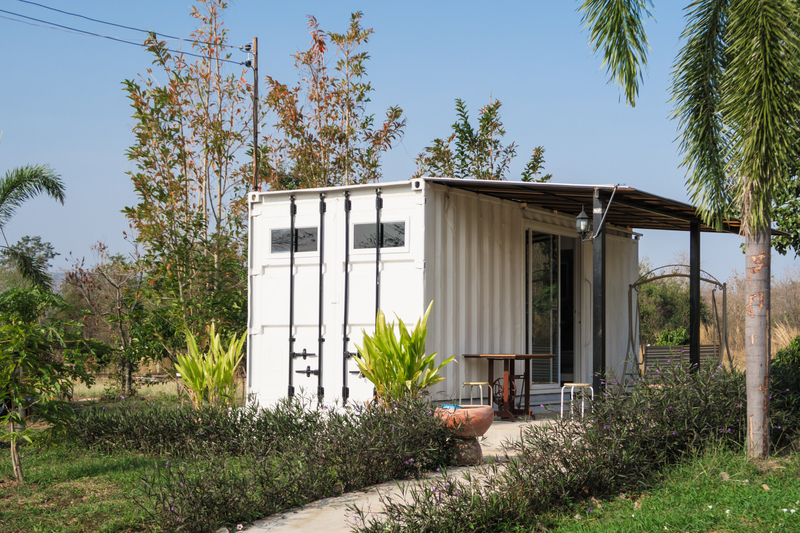Journey to a Fully Eco-Friendly Home Experience
The quest for a fully eco-friendly home is not just a trend; it's a lifestyle choice that benefits both the environment and one's wallet. As more people become aware of the impact of their carbon footprint, the desire to create a sustainable living space has grown. This comprehensive guide delves into the steps and considerations for transforming your home into an eco-friendly haven.
Understanding the Importance of Eco-Friendly Living
The term eco-friendly encompasses practices that are sustainable, non-toxic, and energy-efficient. Transitioning to an environmentally responsible home not only contributes to reducing environmental degradation but also provides a healthier living atmosphere, better air quality, and potential cost savings in the long run.
Benefits of an Eco-Friendly Home
- Reduced Energy Bills: Energy-efficient appliances and solar power significantly lower monthly utility expenses.
- Improved Health: Using non-toxic materials and improving indoor air quality fosters better health and well-being.
- Increased Home Value: Eco-friendly renovations can boost the value of a home on the real estate market.
- Environmental Impact: Reducing waste and conserving natural resources helps preserve the ecosystem.

Steps to Create a Fully Eco-Friendly Home
Energy Efficiency: The Foundation of Sustainability
The first step in your eco-friendly home journey is improving energy efficiency. Start by conducting an energy audit to identify areas for improvement.
- Insulation: Proper insulation reduces the need for heating and cooling, thereby decreasing energy consumption.
- Energy-Efficient Windows: Double or triple-glazed windows keep heat in during the winter and out in the summer.
- LED Lighting: Replace incandescent bulbs with LED lights for longer-lasting and efficient lighting.
Harnessing Renewable Energy
One of the most impactful changes is transitioning to renewable sources of energy.
- Solar Panels: Installing solar panels can generate electricity from the sun, potentially eliminating reliance on non-renewable energy.
- Wind Turbines: If feasible, residential wind turbines can further supplement power needs.
- Geothermal Systems: Utilizing geothermal energy for heating and cooling is a sustainable choice for specific climates.
Sustainable Building Materials
Selecting sustainable materials for renovations or new construction is essential. Here are some options:
- Reclaimed Wood: Gives a new life to old materials and reduces the need for new timber.
- Bamboo: A highly renewable material that grows quickly and is incredibly versatile.
- Cork: Used for flooring and insulation, cork is harvested without damaging the trees.
Eco-Friendly Interior Design
Furnishings and Decor
Opt for eco-friendly furniture and decor to enhance both the aesthetic appeal and sustainability of your home.
- Natural Fabrics: Choose fabrics made from cotton, wool, or hemp, which are biodegradable and less harmful than synthetic options.
- Non-Toxic Finishes: Use paints and finishes that are free from volatile organic compounds (VOCs) to maintain air quality.
- Second-hand Furniture: Repurpose or buy pre-owned furniture to reduce waste and energy consumption associated with manufacturing.
Water Conservation
Water is a precious resource, and conserving it is crucial for sustainability.
- Low-Flow Fixtures: Install low-flow faucets, showerheads, and toilets to minimize water usage.
- Rainwater Harvesting: Collect rainwater for irrigation or non-potable uses.
- Greywater Recycling: Reuse water from sinks and showers for landscaping needs.

Eco-Friendly Home Technology
Smart Home Devices
Integrating smart technology promotes energy conservation and efficiency.
- Smart Thermostats: Automatically adjust heating and cooling settings based on your preferences and habits.
- Energy Monitoring Systems: Track energy usage to identify inefficiencies and adjust consumption accordingly.
- Smart Lighting: Control lighting remotely and schedule usage to minimize waste.
Reducing Waste
Waste reduction is a critical component of eco-friendly living.
- Composting: Transform kitchen scraps and garden waste into nutrient-rich compost for plants.
- Recycling: Properly sort and recycle materials to reduce landfill contributions.
- Reusable Products: Invest in reusable bags, containers, and other household items to minimize single-use plastics.
Conclusion: Embrace the Eco-Friendly Lifestyle
The journey to a fully eco-friendly home experience is a rewarding endeavor that pays dividends for the environment and your quality of life. By implementing these strategies, you not only make a positive impact on the planet but also enjoy the perks of a healthier, more sustainable living space. Embrace the initiative, and take your first steps towards a brighter, greener future.